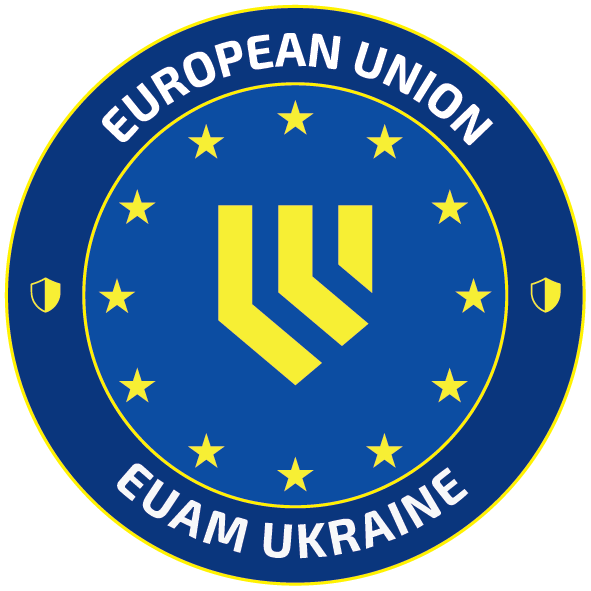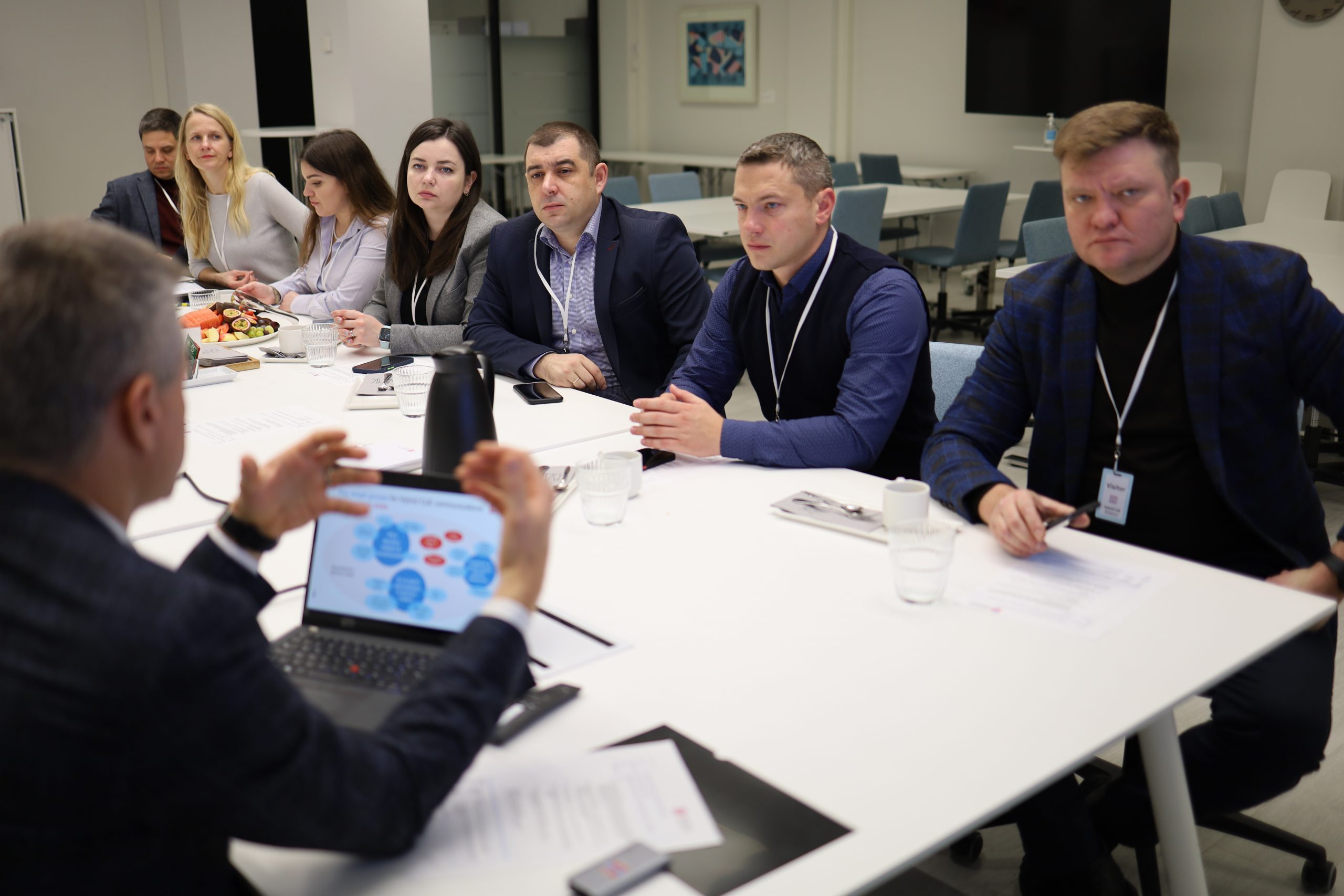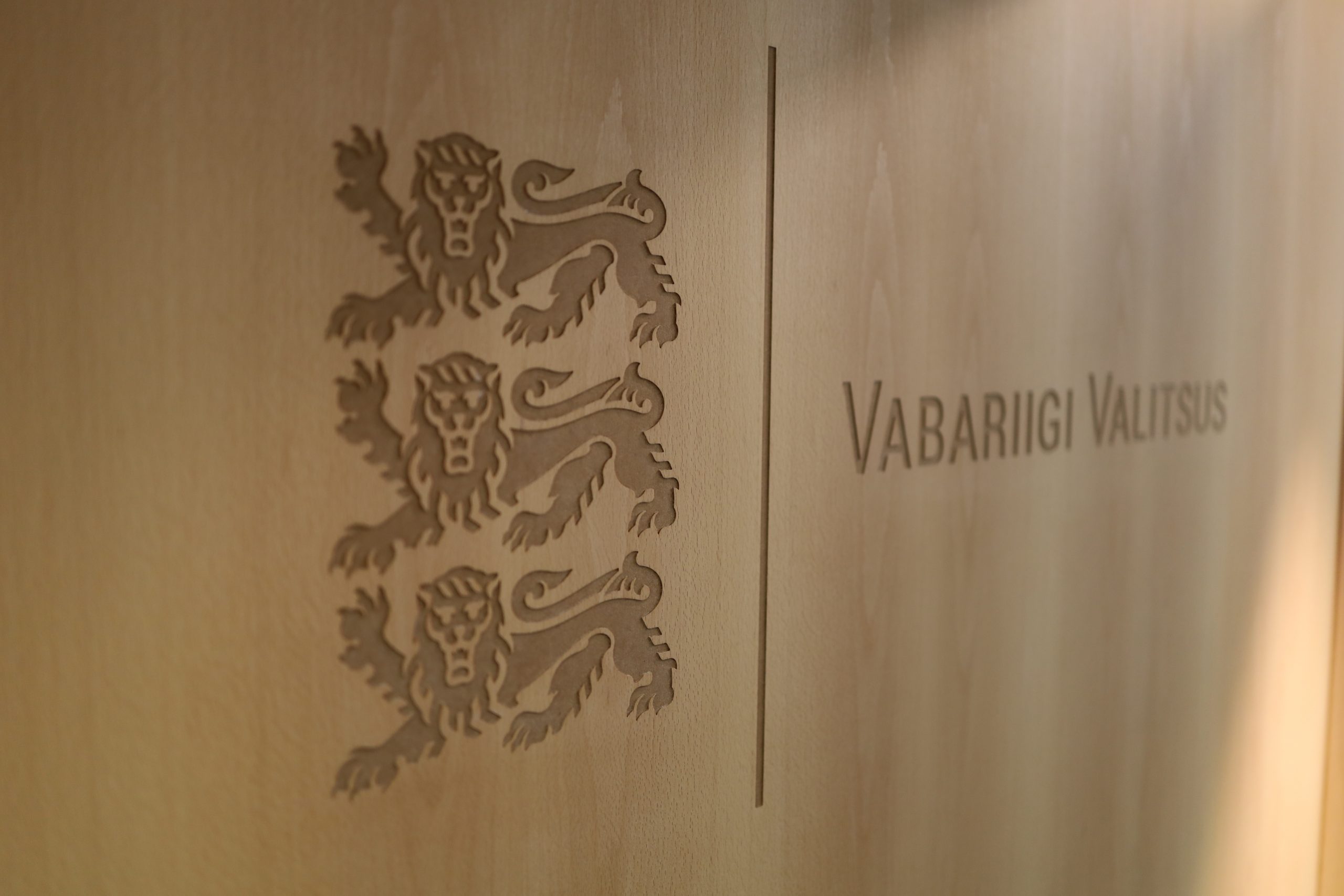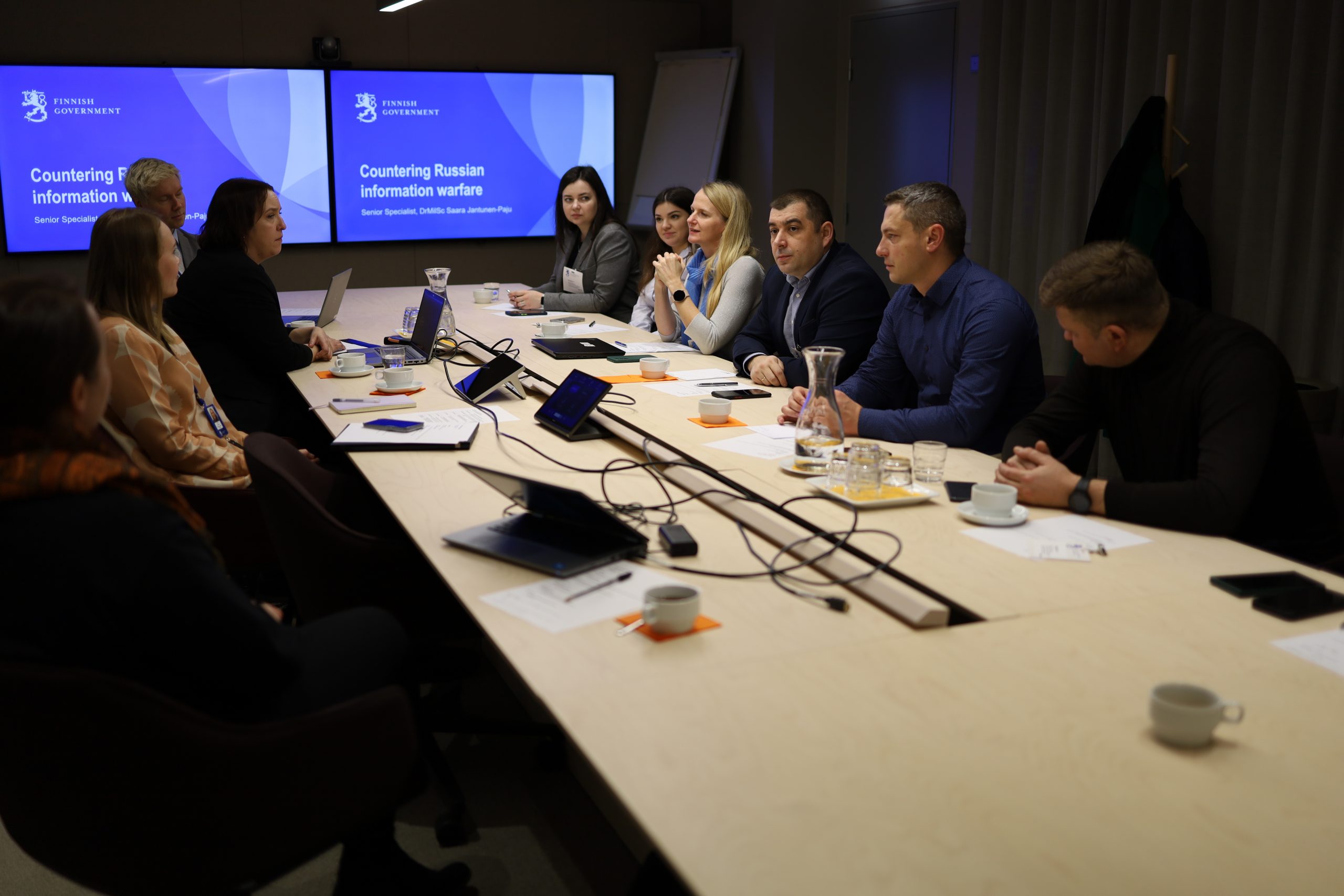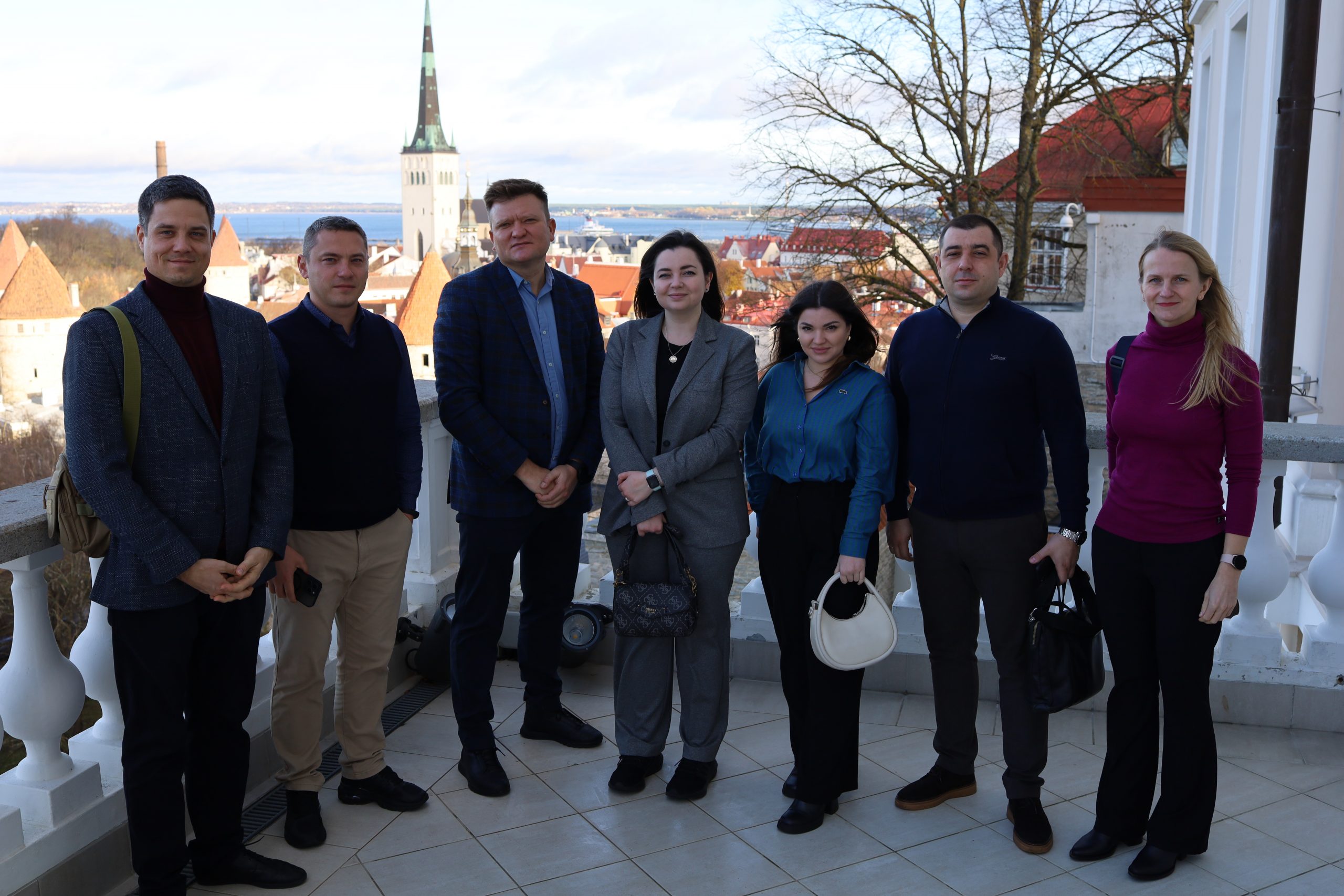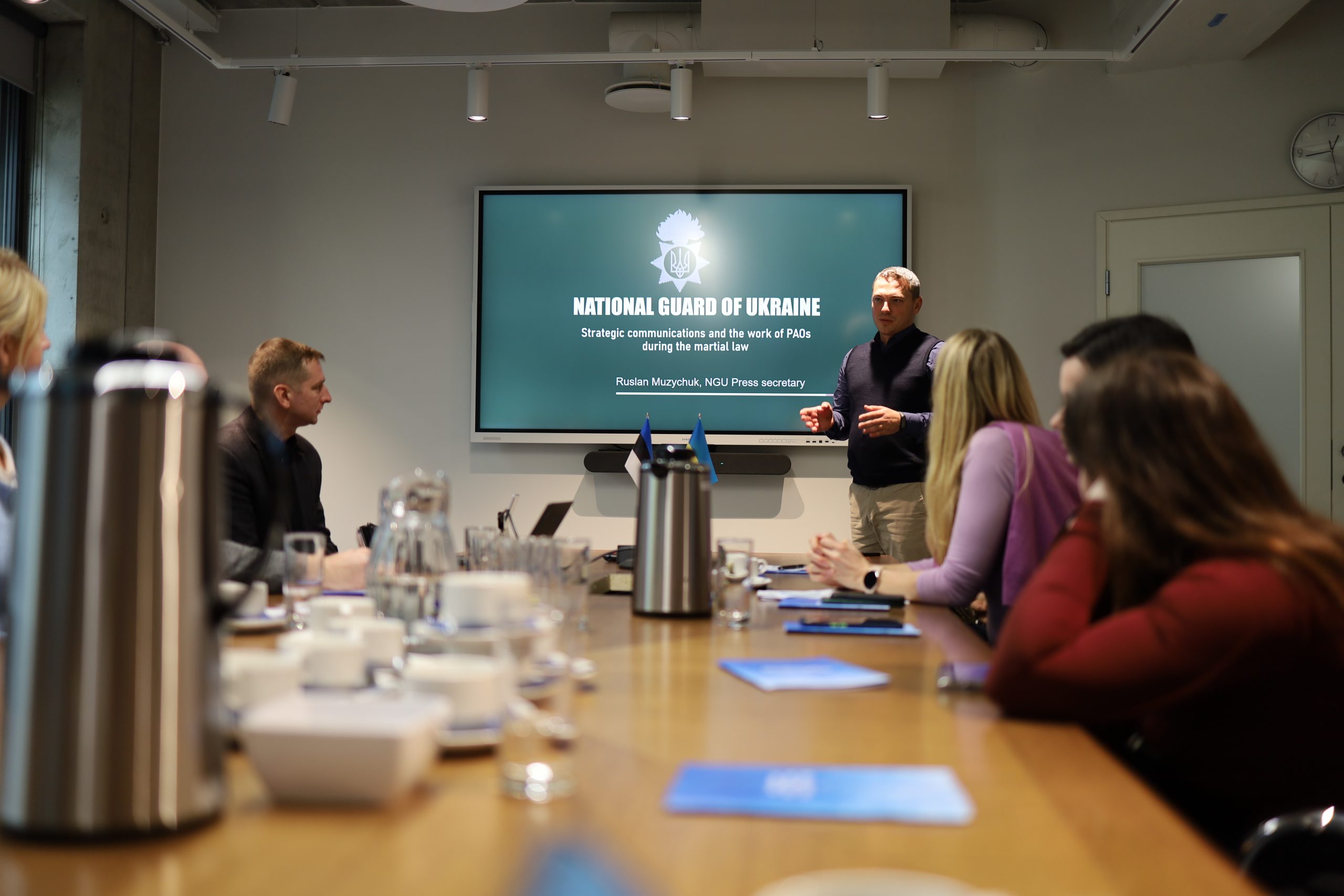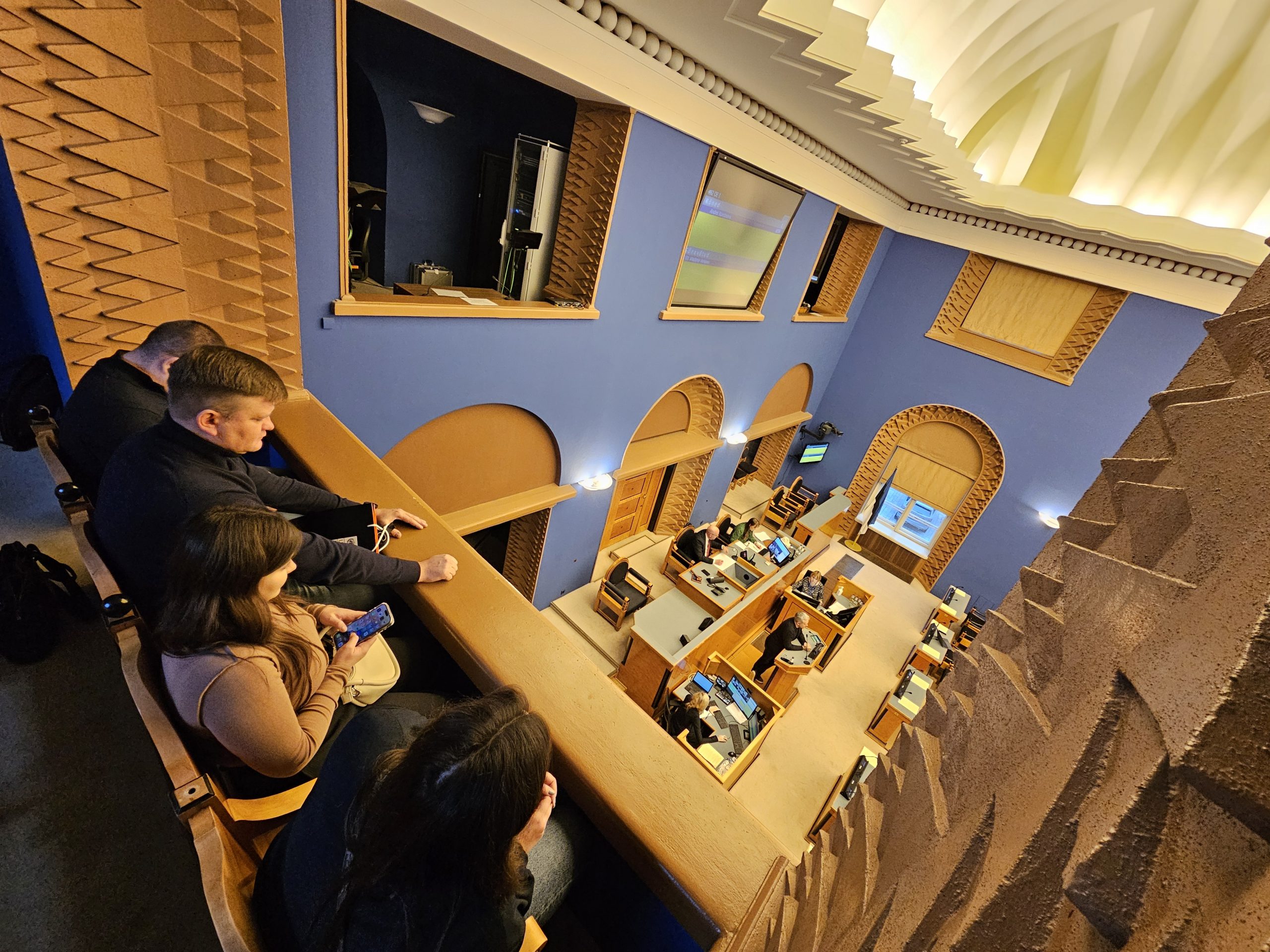Advancing the strategic communications capacities of our partners
November 14, 2024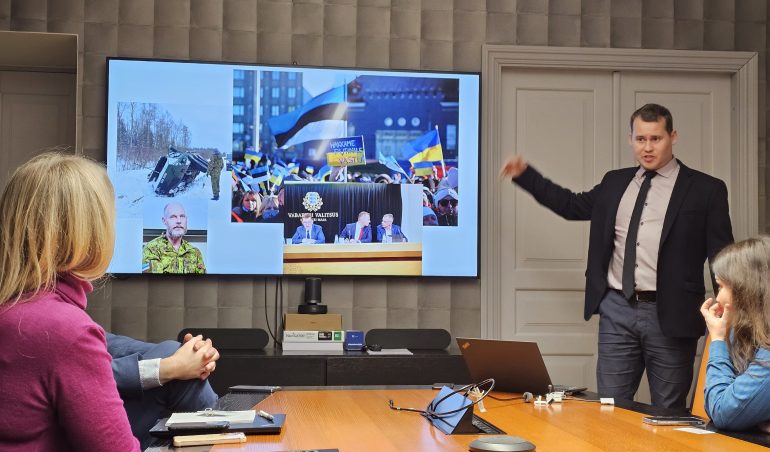
Communicating strategically is vital to foster trust, tackle crises and build resilience in society. In early November, EUAM facilitated a study trip for communications professionals from the Ukrainian Ministry of Internal Affairs (MoIA) and its subagencies to Estonian and Finnish state institutions to gain insights on how strategic communications is managed in these countries.
As members of the European Union, Estonia and Finland have systematically developed their communication capacities as part of their government structures. In Ukraine, however, with the huge challenges the government agencies are facing due to Russia’s war of aggression, the focus is on quick reactions, often due to lack of time needed for planning and strategizing.
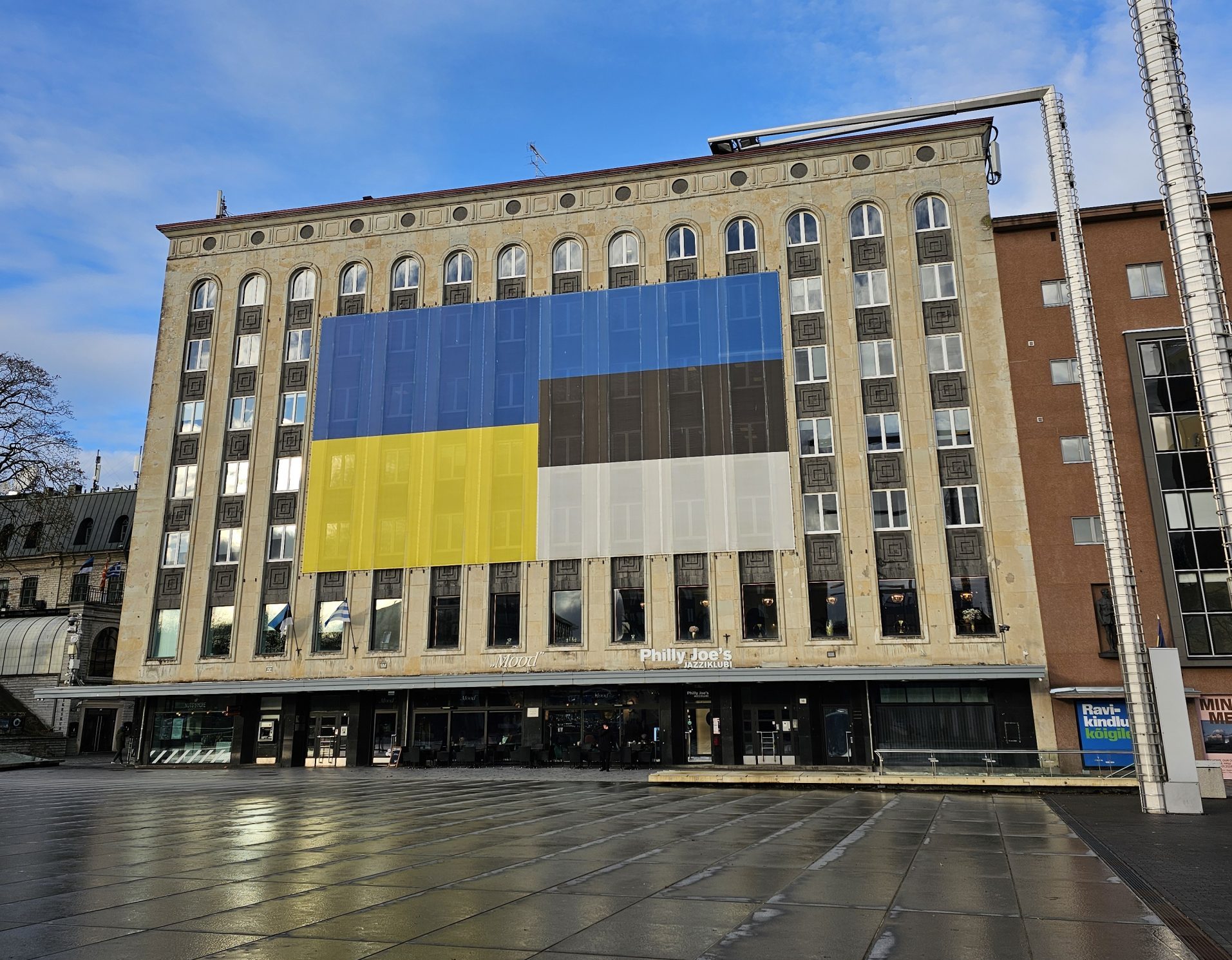
Estonian and Ukrainian flags on Freedom Square in Tallinn
Ruslan Muzychuk, Press Secretary of the National Guard of Ukraine, one of the study trip participants, underlined the big value in learning about the institutional and coordinated approach that the Estonian and Finnish Government Offices strategic communication teams have developed over the years.
‘For us it was important to see and learn about this systematic and overarching concept of communications. Now, using our experience, we need to adapt these principles to the Ukrainian context when preparing our communication strategies, campaigns and other outreach activities,’ Muzychuk mentioned.
The six communication experts representing the MoIA, the State Border Guards Service, the National Guard and the State Emergency Services also witnessed how strategic communications builds into the national defence system of the countries visited. In Estonia, strategic communications is considered as one of the five pillars the country’s National Defence Plan in effect until 2031. This allowed to further understand the pivotal importance that communication plays in the security context.
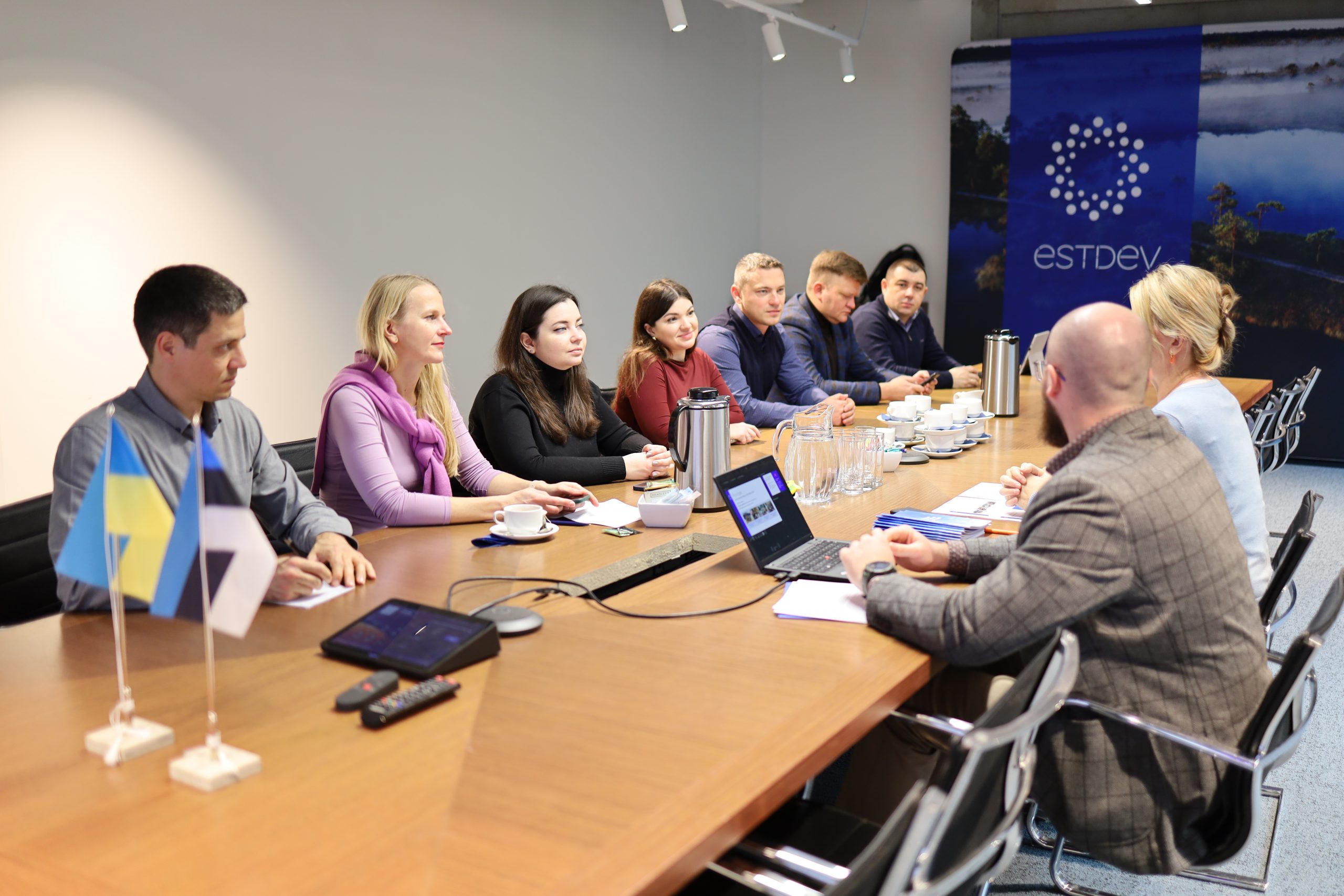
Meeting at Estonian Centre for International Development
The Ukrainian representatives were also able to meet experts from the Estonian Centre for International Development, the European Centre of Excellence for Countering Hybrid Threats in Helsinki as well as hear about the communication work in the Estonian Parliament.
Furthermore, Estonia and Finland being EU Member States, the exchanges offered the possibility for discussion on the communication-related challenges and developments that Ukraine will face once joining the union.
Mihkel Sildnik, Strategic Communications Adviser at the Government Office of the Republic of Estonia and one of the receiving parties of the Ukrainian delegation remarked that during a study visit everybody was able to learn and benefit from the exchange. ‘In addition to offering a space for the Ukrainian experts to learn about the Nordic model, we were equally keen to tap into their expertise as there is a lot to learn from the Ukrainian experience at this point in time’, Sildnik commented.
Anastasiia Bogdanova, Deputy Head of the Strategic Communications and Digital Media Division of the Ukrainian Ministry of Internal Affairs as well as the Head of the Information Policy Unit of the Communication Department of the ministry was also glad that the delegation was able to offer the hosts some insights about the Ministry’s and its subagencies’ experiences on communicating their work during Russia’s full-scale invasion of Ukraine and the challenges that come with it.
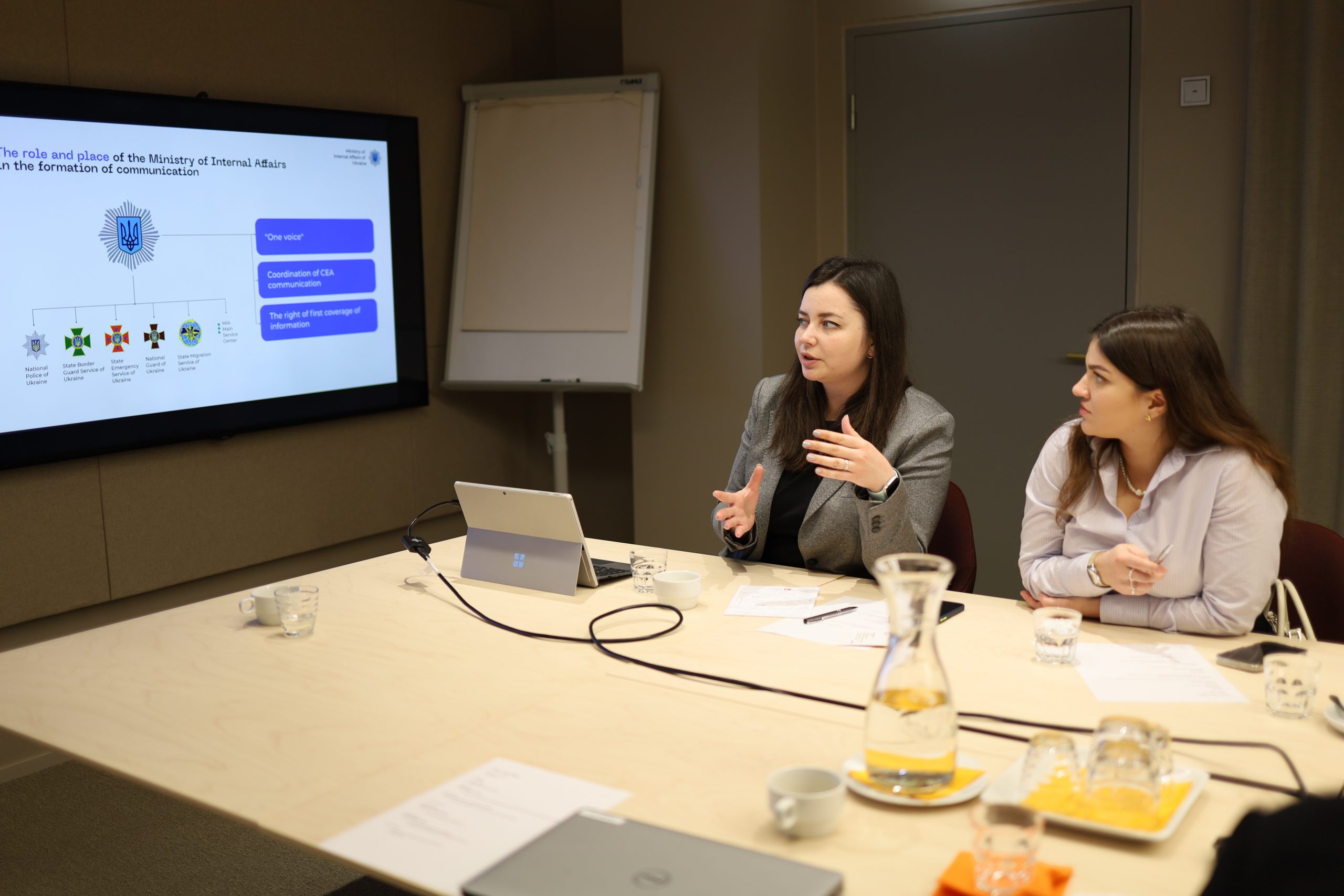
Summarizing the benefits of the study trip, Bogdanova noted: ‘The active exchange of ideas as well as the inspiration it generated allow us to return to our work with new insights. We all understand that there is not one universal way to do communication, but there is a lot we are able to learn from each other through these valuable exchanges.
The study trip was organized by the EUAM strategic communications team as part of its efforts to increase the strategic communications capabilities of our partner institutions in Ukraine.
Photo credits: Dmytro Slyvnyi, participant from the SBGS press office.
